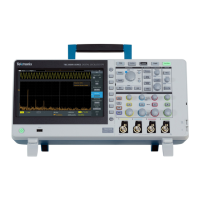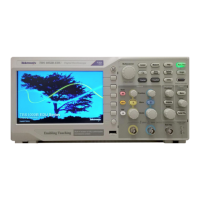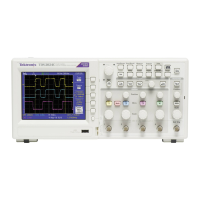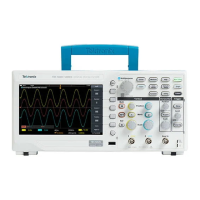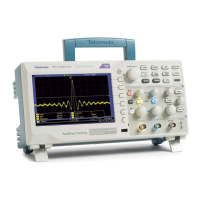Arguments
EXECute starts diagnostics.
ABORt stops diagnostics at the end of the current loop.
Examples
DIAG:STATE EXECute starts diagnostics.
DIAg:TEMPVAL
Read out the currently FPGA chip and ambient temperature. Only query.
Group
Calibration and diagnostic
Syntax
DIAg:TEMPVAL?
Examples
DIAG:TEMPVAL? might return: VDC Temp=-256, Ambient Temp=32
DISplay:GRAticule
Sets and returns the display graticule intensity settings.
Group
Miscellaneous
Syntax
DISplay:GRAticule {<NR1>|ON|OFF}
DISplay:GRAticule?
Arguments
ON or <NR1> ≠ 0 turns on the graticule in the screen display.
OFF or <NR1> = 0 turns off the graticule in the screen display.
Examples
DISPLAY:GRATICULE 0 sets NO graticule to display.
DISPLAY:GRATICULE? might return :DISPLAY:GRATICULE 1 indicating
that the graticule is on.
D commands
102 TBS2000 Series Programmer
